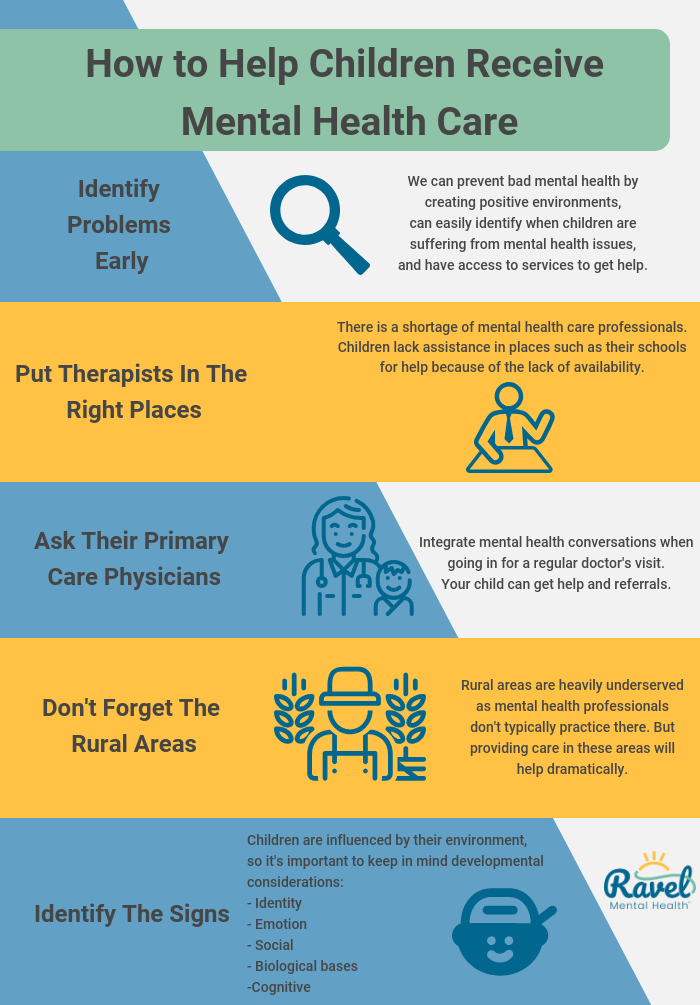The mental health field has had to navigate new ways of providing care for its patients as the world evolves. The pandemic has made therapists find alternative ways to treat their patients, and society has become more open to addressing mental health issues.
So how can you help your clients as things change? Here are five new mental health trends transforming how we do therapy in 2022.
Need help finding new patients in 2022? Sign up for Ravel Mental Health today!
Why Are There New Trends?
Several factors explain why there are new trends in the mental health industry. One of the most prominent reasons is the pandemic’s effects on society.
One consequence is that therapists need to find a new way to provide quality mental health services. People weren’t leaving their homes to meet in person, which created a big issue with providing therapy sessions.
The pandemic also showed increased numbers of people suffering from mental health issues. This has created a large vacuum of demand for mental health professionals to be higher than the supply. Therapists have to find new ways to provide help to rising numbers of patients while still maintaining quality care.
To go along with the rising number of people seeking mental health care, the way people perceive mental health care has changed. Whereas before, talking to mental health professionals was not common, society now looks at mental health care as positive and beneficial. Since people feel less judgment about seeking help, they’re more open to receiving the care they need.
The combination of openness and the effects of the pandemic has left therapists having to become more creative in how to help. With society changing, therapists must be cognizant of how this affects their patients.
What Are the Trends?
Several trends have risen for 2022. However, five key ones have revolutionized how therapists provide care to their patients or changed their treatment methods.
1. Teletherapy
One of the most significant revolutionized changes in the mental health industry is teletherapy. While people couldn’t interact with one another during the pandemic, therapists created new ways to provide care.
Teletherapy is any remote therapy that uses technology to help the therapist and client communicate. Some examples of teletherapy include:
- Talking over the phone.
- Receiving therapy via email or instant messenger.
- Communicating through a group chat for group therapy.
- Utilizing video conferencing for individuals, couples, or group therapy.
- Using online services or apps like Ravel Mental Health to connect with new patients.
There are a few benefits for patients who receive care through teletherapy. Most have greater access to care, as it tends to be more flexible, and it can sometimes be at a lower cost. Some people feel like they have more privacy by doing their therapy sessions from home, and some clients feel a higher satisfaction with treatment.
There are some benefits for therapists as well, including:
- Reduced overhead costs as offices can be expensive. Since they work from home, this can be a great way to focus more on their quality of care rather than running a practice.
- Teletherapists can reach more clients by offering services online. They may also reach people with disabilities, financial worries, transportation difficulties, and other barriers. Providing an online service widens their reach of help.
- Although small, working from home allows them to cut commute time from their work life. Therapists can use this additional time to treat more patients or plan treatments.
The added benefits of easily accessible therapy have created a new trend in mental health care.
2. Children Mental Health Care

Before the pandemic, nearly one in five children struggled with a mental health condition. This number has appeared to rise as six in 10 parents in an October 2020 survey said their child had experienced emotional or mental health challenges in the past month, while a third reported that their child’s mental health had declined during the pandemic.
Meanwhile, access to care for children has remained scarce. The Centers for Disease Control and Prevention said, “Only about 20 percent of children with mental, emotional, or behavioral disorders receive care from a specialized mental health care provider.” The unmet need has taken a toll on families who want to help their kids.
This may include parents searching for jobs with family mental health care in their benefits. Some employers recognize that insurance must be provided for the whole family rather than just the individual. Hopefully, with insurance helping with mental health care, children can get the help they need.
This still requires the industry to close the shortage of mental health professionals, especially school counselors. The Substance Abuse and Mental Health Services Administration estimates that by 2025, the U.S. will require 321,500 school counselors but may only have 243,450 available. Hopefully, this discrepancy will not happen as more people emphasize providing children with mental health care.
Do you want to help close the gap between people in need and provide help? Sign up for Ravel Mental Health today!
3. Work-Life Balance
In 2022, more people expect companies to give their employees expanded options and control of their work and benefits. Many companies are exploring ways to boost workforce morale, engagement, and retention. With the pandemic, companies and employees have been forced into accepting a more flexible work schedule.
Lucky for employees, this has meant that their work-life balance may have changed. Companies are now valuing policies such as working remotely or work-from-home days. Employees tend to rank flexible work schedules as one of the most important benefits of health, dental, and vision.
Employers have also found a boost in morale as people have created a better life balance. Allowing them to choose how they work has made optimization of productivity. They’re allowed to decide how they work and feel more valued, motivating them to value their work.
With this new trend, therapists can use this opportunity to help guide their clients to an appropriate work-life balance. Patients may also use this opportunity to find new methods toward happiness. With the guidance of their therapist, they can create a balanced life.
4. Culturally Sensitive Therapy
Therapists are moving towards practicing culturally sensitive therapy. This means that instead of ignoring their client’s race, they emphasize the understanding of how a client’s background, ethnicity, and belief system affects them. This can help you better treat your patients in a way that works for them.
It also means that you understand your background and how that can affect your situation assessment. If you can recognize the similarities and differences between you and your patient’s backgrounds, you can work towards better solutions for them. Some characteristics can change the connection between you and your client, including:
- Age
- Beliefs
- Ethnicity
- Race
- Gender
- Religion
- Disabilities
- Sexual orientation
- Socioeconomic status
This trend of culturally competent therapists will revolutionize the way people are treated. It will also help the underserved BIPOC population. With therapists changing to practice culturally sensitive therapy regularly, it will help more people get the help they deserve.
5. Restricting Social Media
Social media has become an integral part of our society. There is a significant pull on our lives with our online presence and what is happening on social media. It’s become an essential part of how many people connect.
However, there are reservations about how social media affects a person’s mental health, particularly teenagers. Documentaries like The Social Dilemma have highlighted the dangers of social media and how that affects people.
As people recognize the dangers of being on social media too much, some have started to restrict their social media usage. Many who quit social media report higher feelings of happiness and lower amounts of anxiety.
Therapists can use this movement of people valuing their mental health to help them in any way they can. You can help your patients focus on what is happening in their physical world instead of online. There should be a focus on therapists helping their patients recognize when social media may be contributing to declining mental health.
Therapists can help their patients find the balance of being engaged online but valuing their mental health more.
How Ravel Mental Health is Revolutionizing Trends
At Ravel Mental Health, we work towards easily providing clients with a way to find their mental health professional. We help you streamline your process of connecting with new clients who fit your changing practice.
Clients can look at your availability and use our online platform to schedule an appointment themselves. You can accept their booking with one click, so it’s easy for everyone. While we focus on getting you new clients, you can stay on top of mental health trends.
Ravel Mental Health will help you connect with patients in need. You can help them find their way to a better and happier life.
We can help more patients together. Sign up for Ravel Mental Health today!
